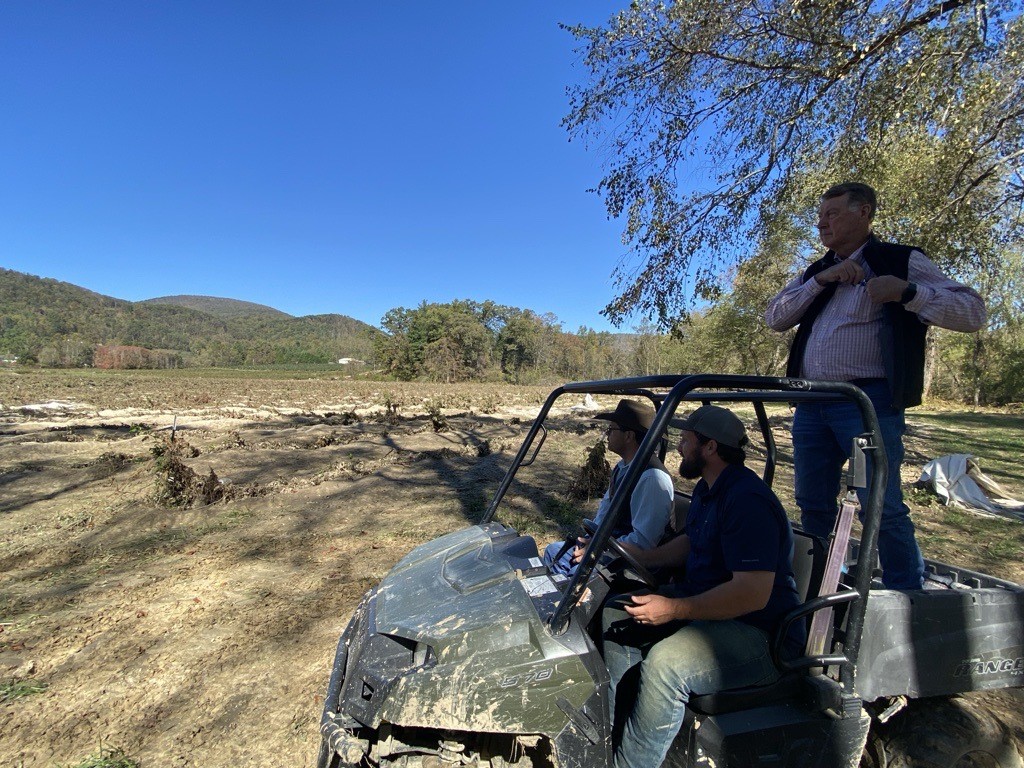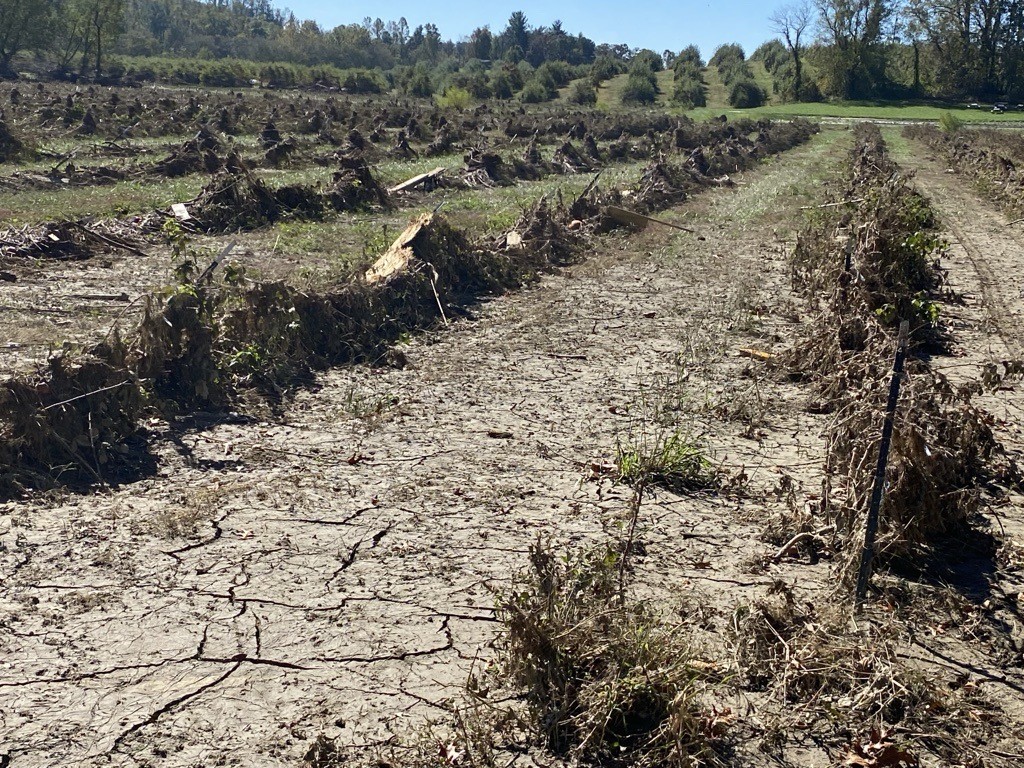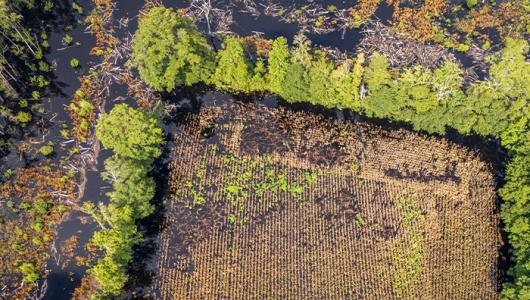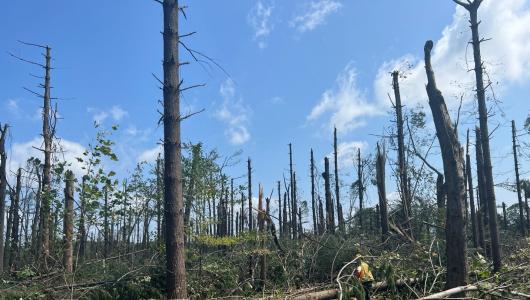There’s no real way to understand the devastation of seeing your place completely destroyed unless you’ve lived it. Over the past few weeks, I and other USDA leadership have toured parts of Florida, Georgia, North Carolina, South Carolina, and Tennessee to visit agricultural producers and learn, from their perspectives, about the impacts to agriculture from back-to-back-to-back hurricanes Debby, Helene, and Milton. We came away from those conversations with a clearer understanding of what was needed and impressed with the resilience and sense of community we saw.
While damage assessments for all three hurricanes are ongoing, preliminary estimates of the total damage and economic loss from just Helene (ag and non ag) in the U.S. is between $95 billion and $110 billion. Early reports from USDA estimate crop losses alone from Helene could trigger $7 billion in insurance payouts.
The hours of in-person visits with producers as they begin to pick up the pieces of their operations have given us all a better perspective of the catastrophic loss these producers have endured.
Our hearts go out to every victim of these disasters. And to the farmers, livestock producers, and rural landowners who have selflessly taken time away from rebuilding their lives to give us tours and have candid conversations about their needs during this extremely challenging time - thank you. We will do everything within our power to help.

Each one of these new catastrophic events helps us understand that we can’t stop our efforts to do as much as possible, as quickly as possible, to remove program barriers and address immediate recovery and rebuilding needs in these heavily impacted areas.
In Florida, only the outer reaches of the Panhandle were spared from the destruction that impacted the rest of the state through the three hurricanes and related weather. All agricultural sectors have impacts, including but not limited to dairy, poultry, beef, specialty crops, forestry, and aquaculture.
Georgia’s largest impacts are found in the eastern and southeastern parts of the state. Timber, poultry, pecans, horticulture, and cotton represent some of the state’s biggest agriculture losses. Cotton was nearing harvest time, as were pecans. Pecan trees that were uprooted and damaged represent “generational losses.”
In North Carolina one long-time leader told us they’d been through hurricanes Katrina and Floyd and still hadn’t seen anything as bad as the state’s current impacts, which mainly came from hurricanes Debby and Helene and were stacked on top of drought conditions. Specialty crops, such as apples and tomatoes, and the dairy and beef sectors all suffered major losses.
The western half of South Carolina is facing impacts, mainly from hurricanes Debby and Helene, but also layered on top of existing drought conditions. The area’s timber industry, cotton, peanuts, soybeans and specialty crops, poultry, dairy and beef sectors all are impacted. Leadership noted a preliminary economic estimate by Clemson Extension put the miles and miles of damaged or downed fencing and other infrastructure at a higher loss than any one crop at this time.
Northeastern Tennessee endured what area leaders described as "biblical" amounts of rainfall from Hurricane Helene, negatively impacting water retention infrastructure to the extent of having a major dam breech. The resulting flood destroyed everything in its path, including, from an agricultural standpoint, entire farms. Crops impacted included corn, soybeans, and vegetables produced along the river, among others. Livestock in the flood's path also perished.
Through all of these visits one thing is clear; the last thing producers need are inflexible and rigid program guidelines, often developed to fit other disasters in other locations. For example, it’s not possible for a producer to bring in required paperwork to apply for assistance if their home office records are scattered across a field or reside in a flood-soaked laptop. It’s unrealistic to expect producers who are busy clearing debris from farm lanes and yards to stop their efforts for a program pre-approval process.
Our USDA team has responded with adaptive program measures for producers in hurricane recovery mode. FSA, along with our colleagues at the Natural Resources Conservation Service (NRCS) and Risk Management Agency (RMA), offer a full suite of programs that provide technical and financial assistance available to help farmers, livestock producers, and communities recover from crop, land, infrastructure, and livestock losses and damages. Available assistance includes:
- insurance indemnities and related risk management assistance,
- access to affordable credit and loan servicing options,
- financial assistance for crop, feed, forage and livestock losses,
- program support to rehabilitate or repair damaged farmland and forests and infrastructure, and
- working with local government sponsors with the cost of addressing watershed impairments or hazards such as debris removal and streambank stabilization.
See a full list of the flexibilities USDA has implemented to assist on farmers.gov/hurricane.

Farmers, livestock producers and rural landowners impacted by the hurricanes and related natural disaster events will find many useful programs to support their recovery and rebuilding process. Each of these programs have value for producers, but each program is unique — having its own details, deadlines and loss documentation requirements. We’ve done our best to explain them, in a new, simplified format, in a hurricane assistance fact sheet. All of these online reference resources are great but if you want personal assistance, from knowledgeable, caring staff, please don’t hesitate to reach out to your local USDA Service Center. When you’re ready to report losses or apply for assistance, we’ll be here ready to help.
During my recent travels to hurricane-impacted states, not only did I get to hear a producer express his thankfulness for the role the federal government played in previous disasters, but I also heard him express hope and gratitude for our presence now and the support we are offering, collectively at USDA, in the aftermath of these most recent devastating natural disasters.
I speak for myself and all of us here at USDA when I say this why we do what we do every day. It’s in all of our best interests to help these producers succeed and that’s exactly what we intend to do, no matter how long it takes, how many visits we need to make or how many policies we need to revisit and refine.
During my travels, I was able to listen, from 40 feet away, as President Biden articulated why the federal government is important in good times and bad, but especially in times of tragedy. The sense of community, and values he explained, with which I so closely align and identify with, were further elaborated on by Secretary Vilsack, as he shared many of the program flexibilities, which we’ve developed under his leadership and guidance and are exercising across the Department.
On behalf of all of us at USDA, I want to reiterate our sincere desire to deliver the full scope of resources we have available to those impacted by hurricanes Debby, Helene and Milton. We know a return to a sense of normalcy is a long-term commitment, and we pledge to stand with our producers through it all, every step of the way.
If you don’t know how to contact your local office, you can find that information here or contact the FSA Call Center at 877-508-8364, the USDA hotline at 833-ONE-USDA (663-8732), or access program information online at farmers.gov/hurricane.
Zach Ducheneaux is the Administrator of USDA’s Farm Service Agency.


